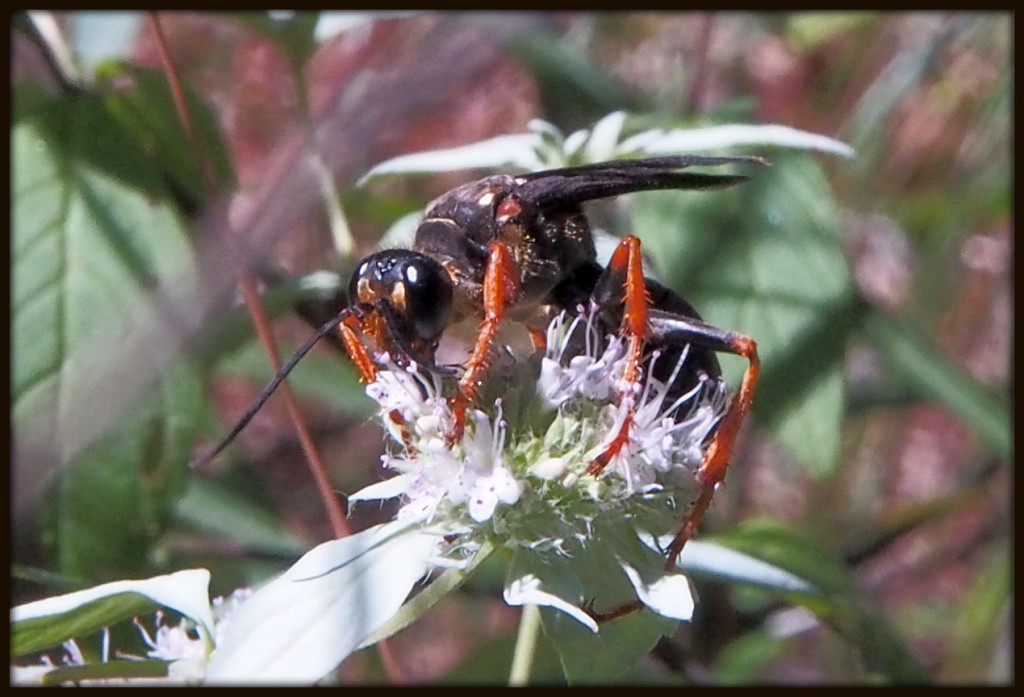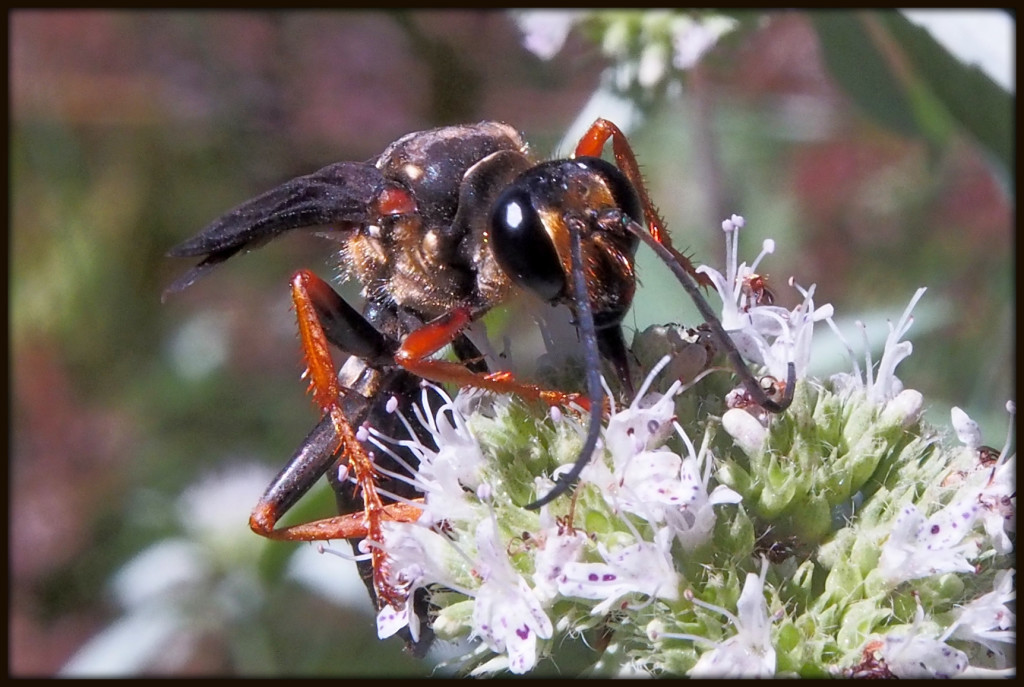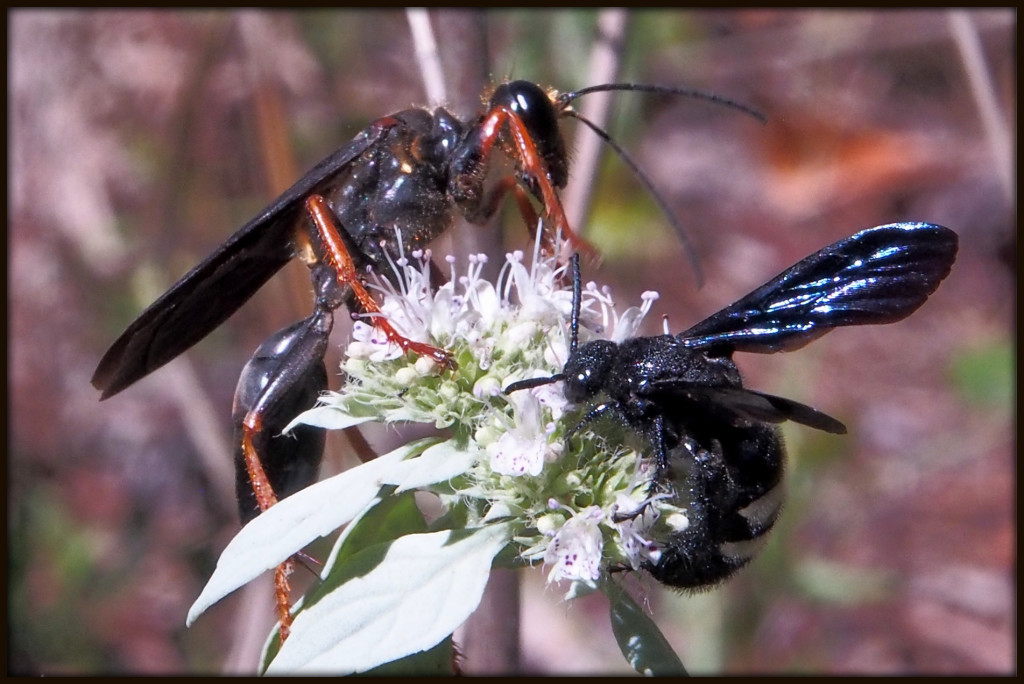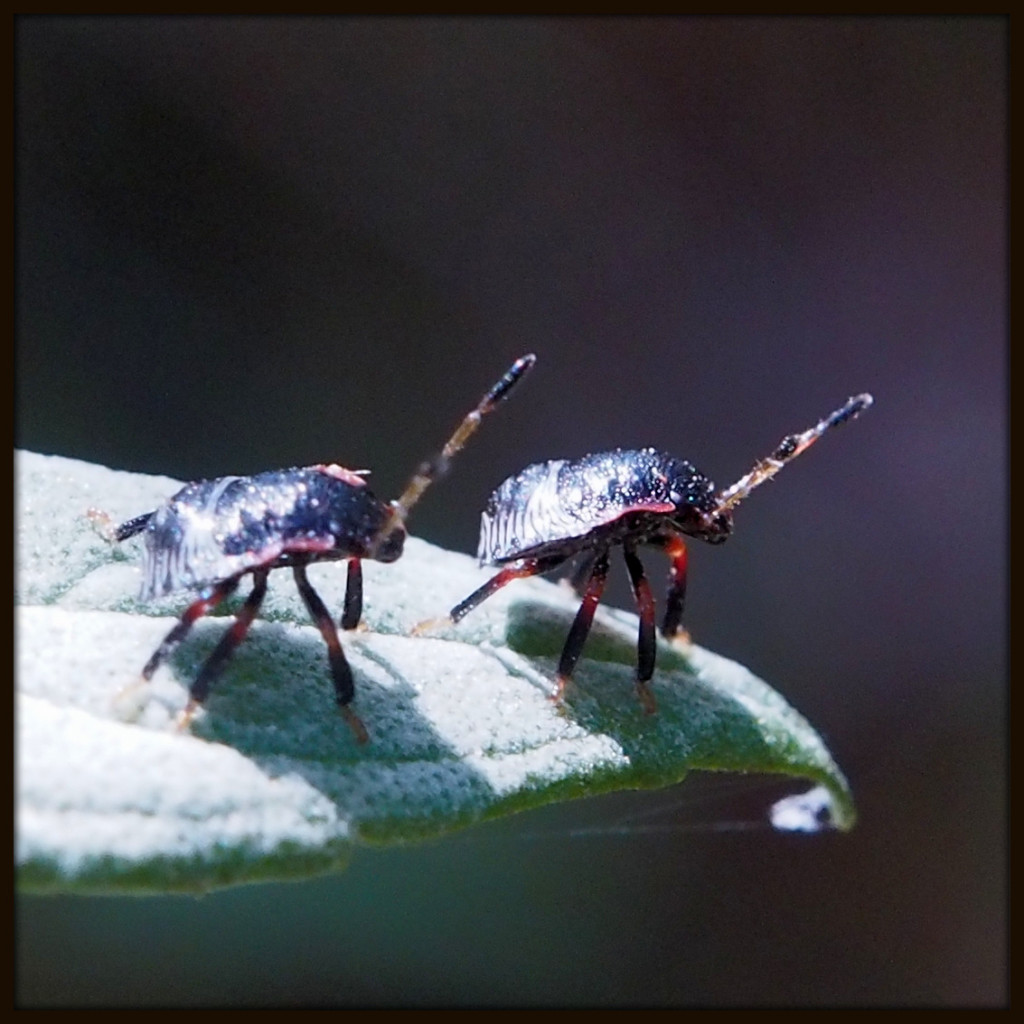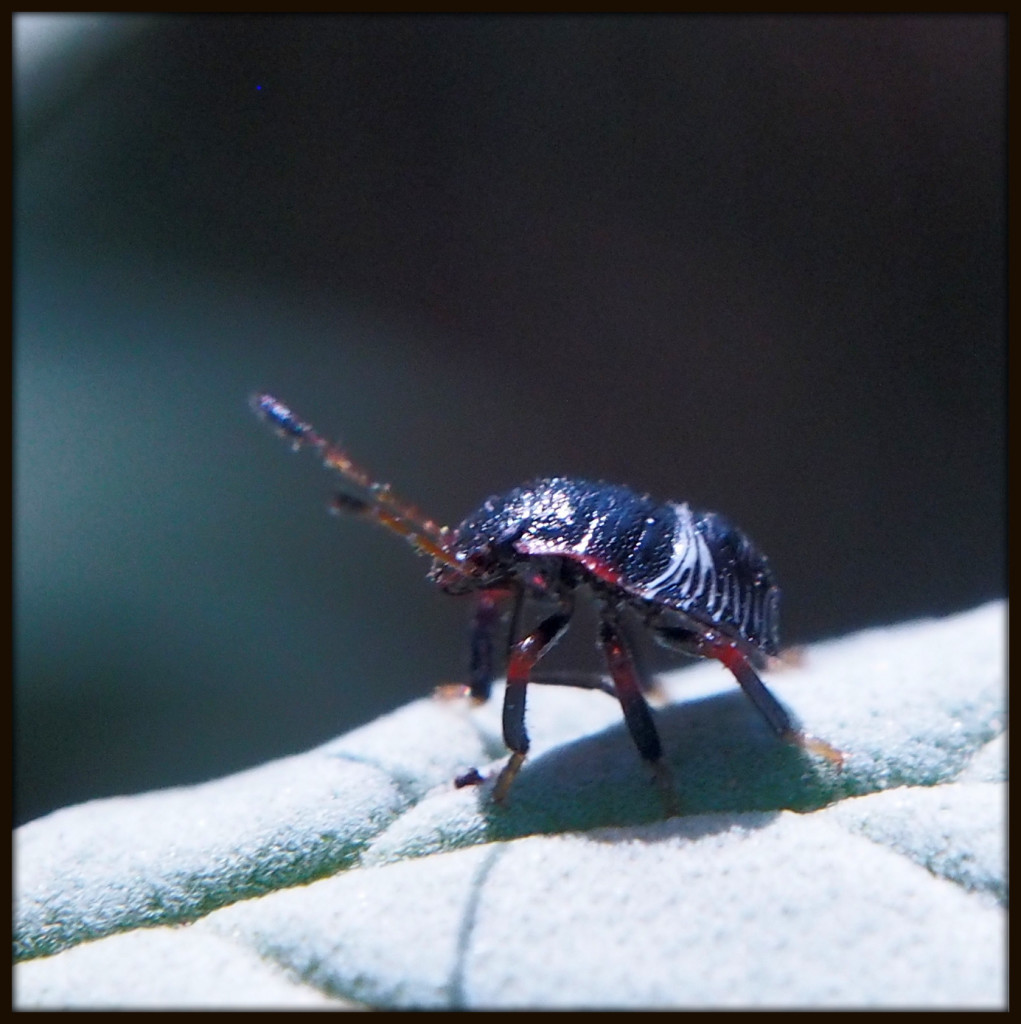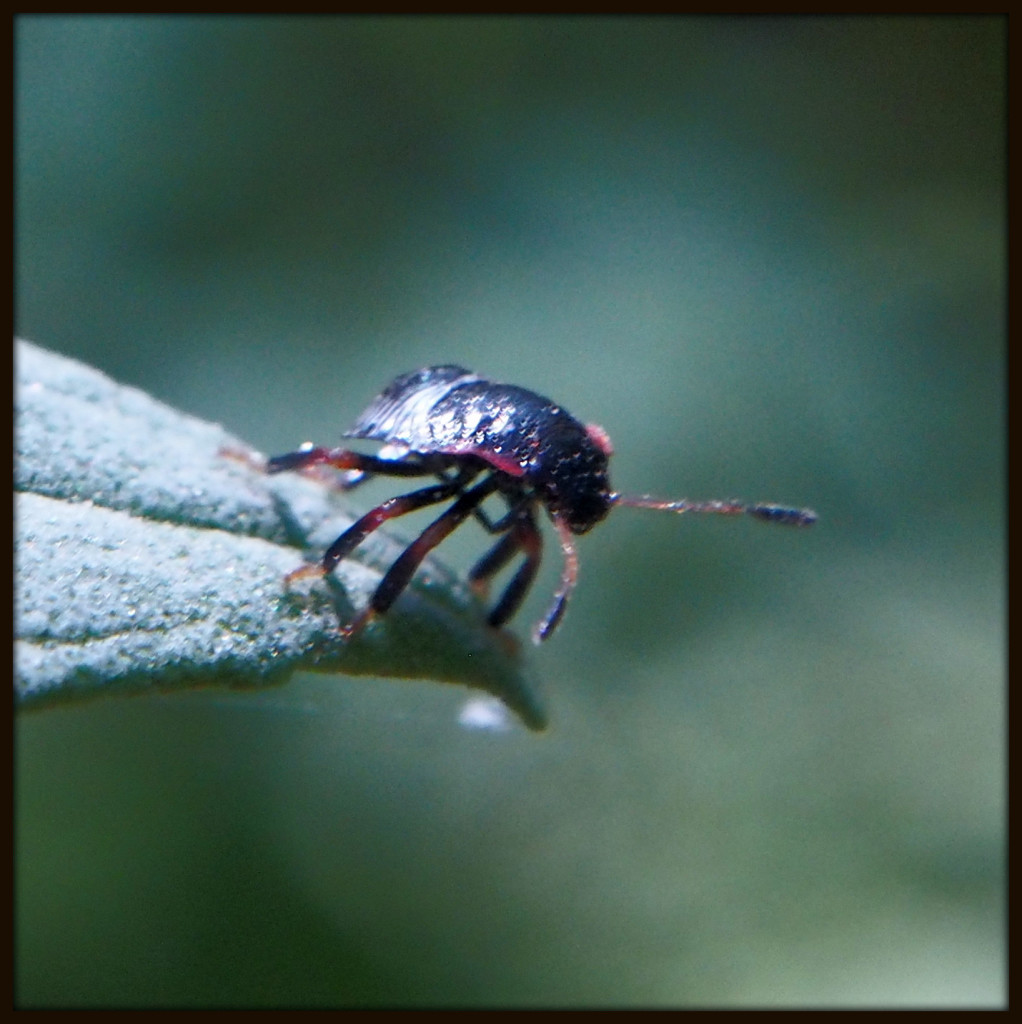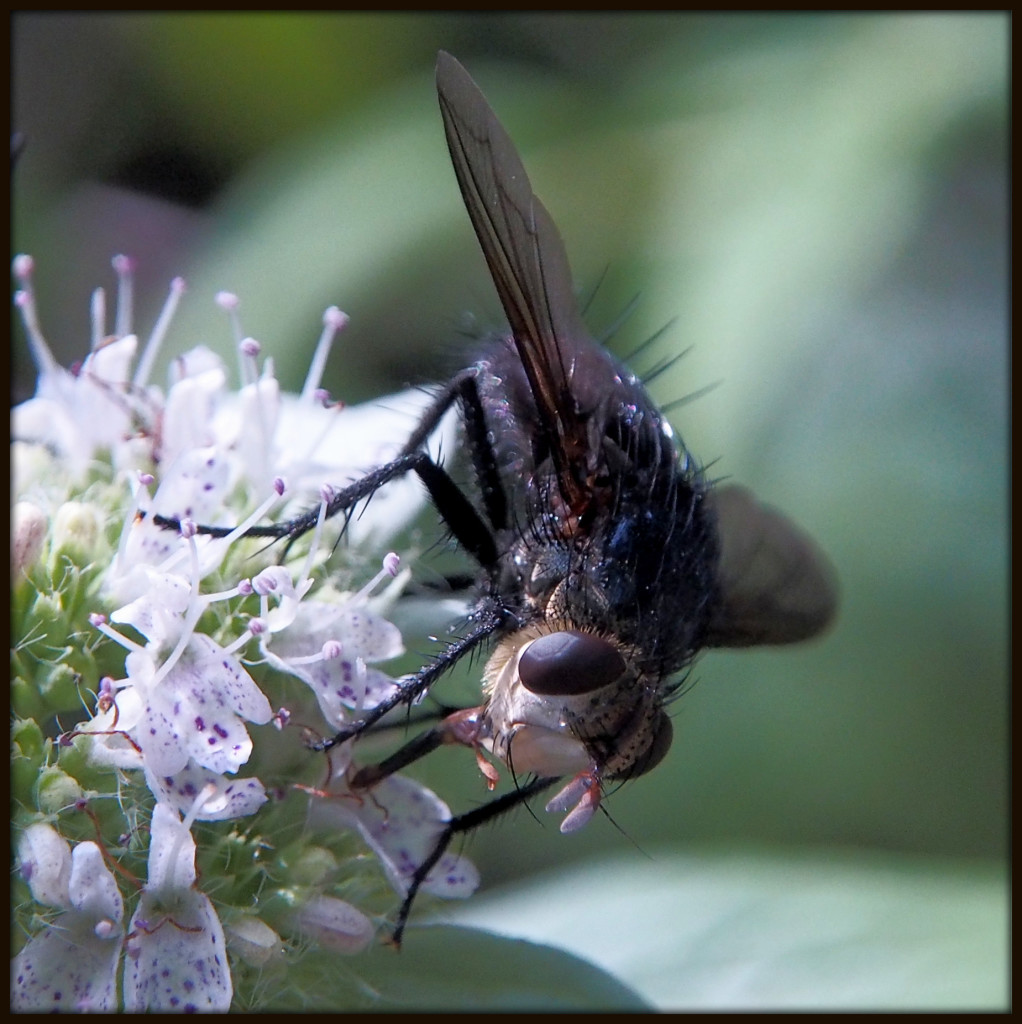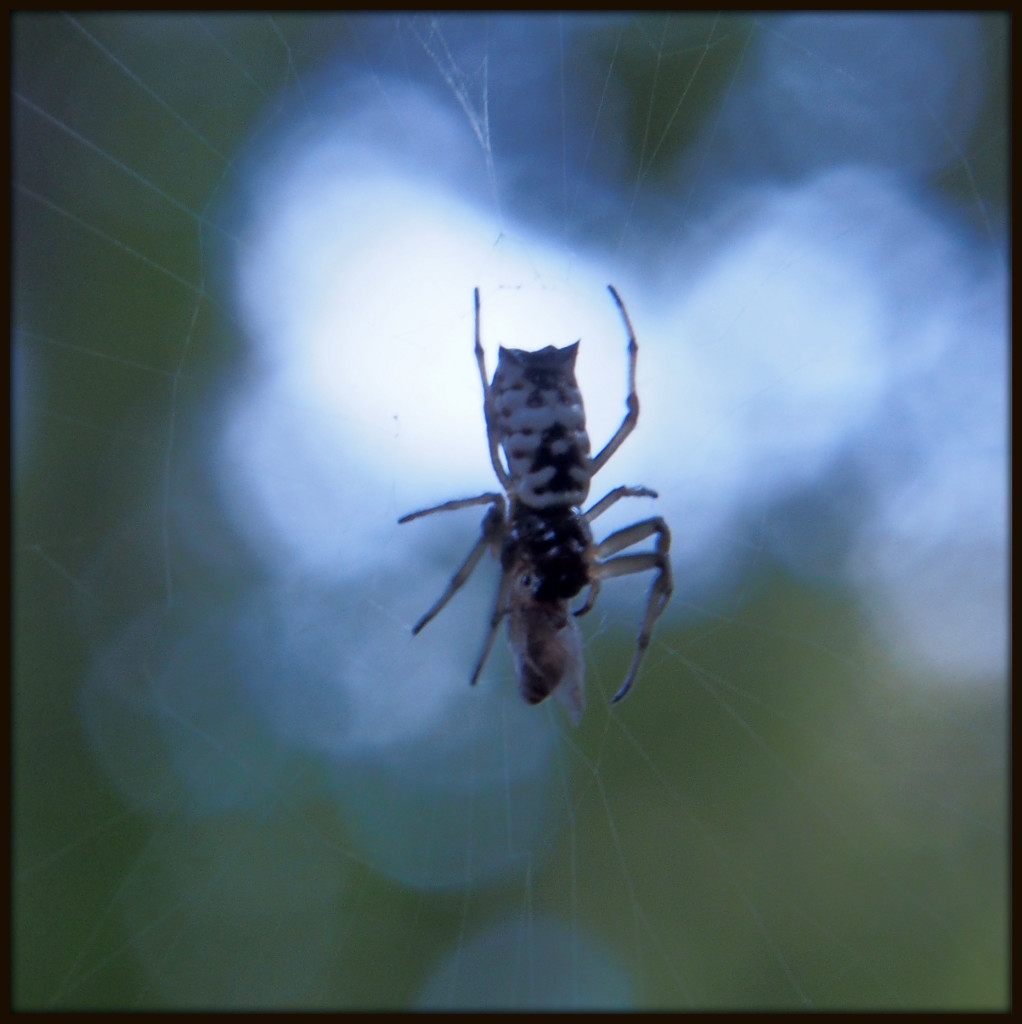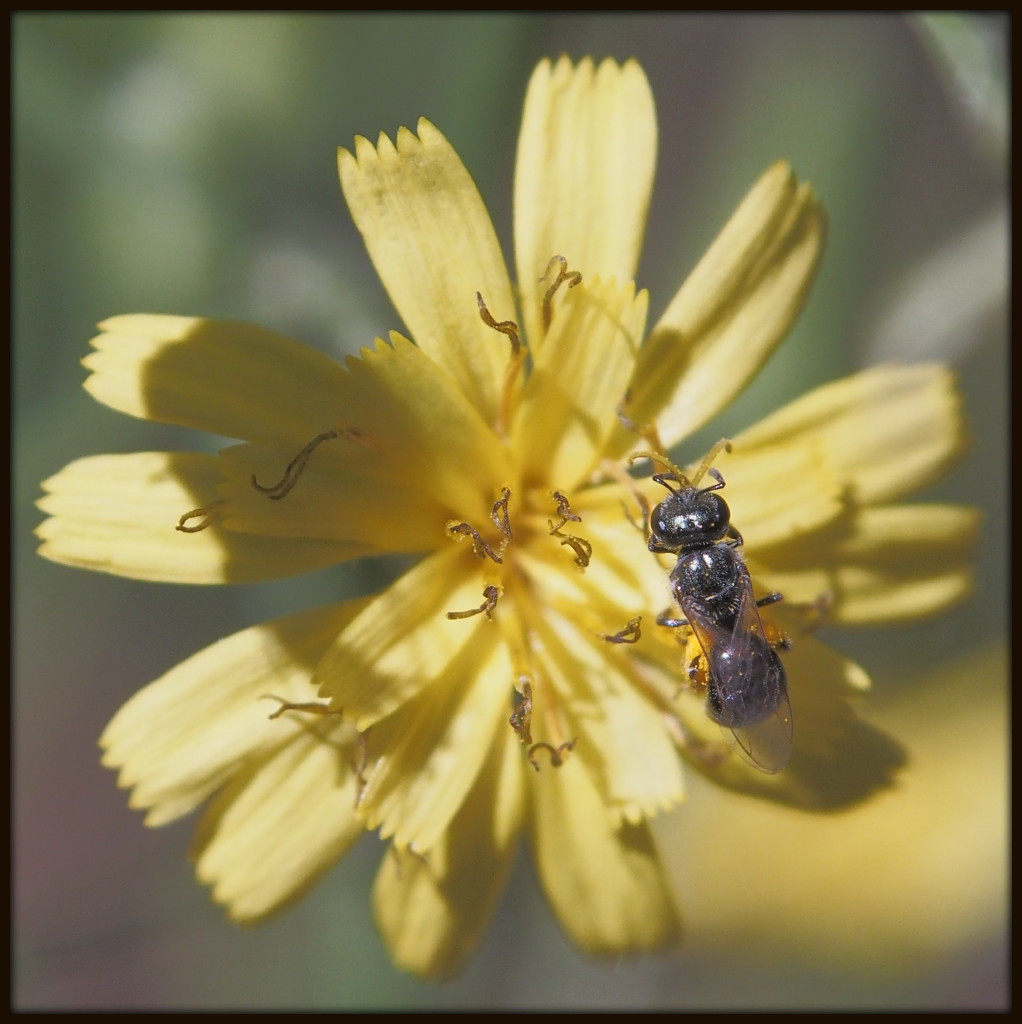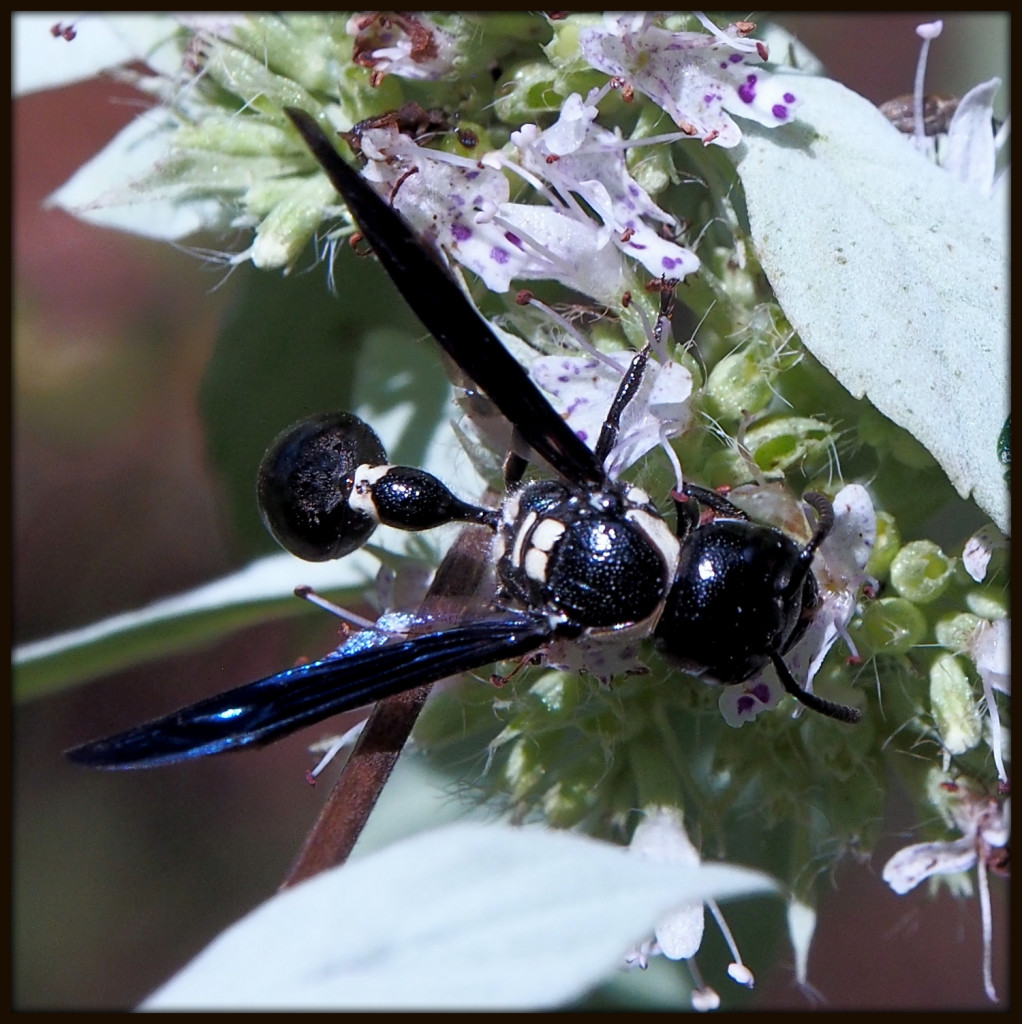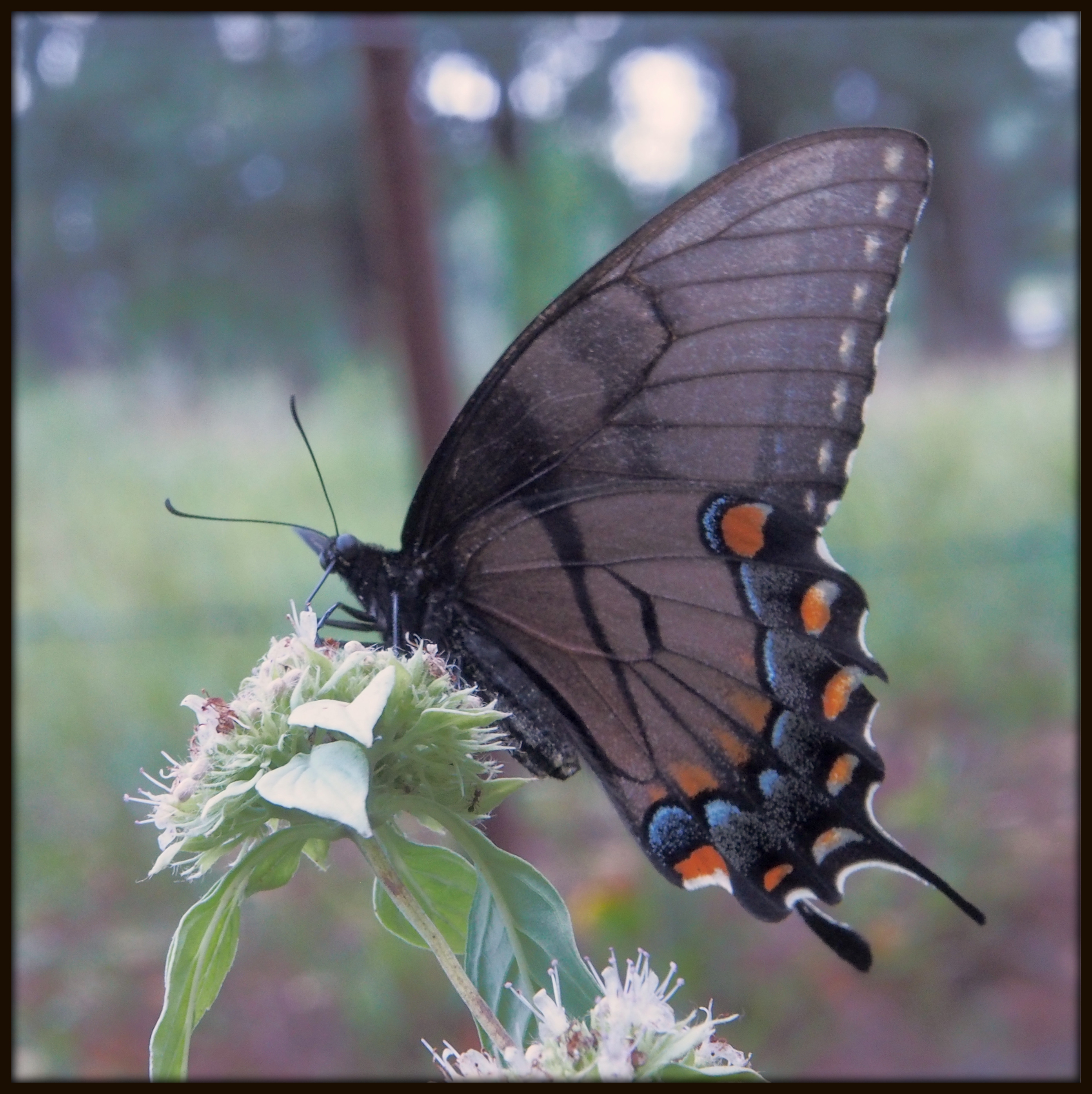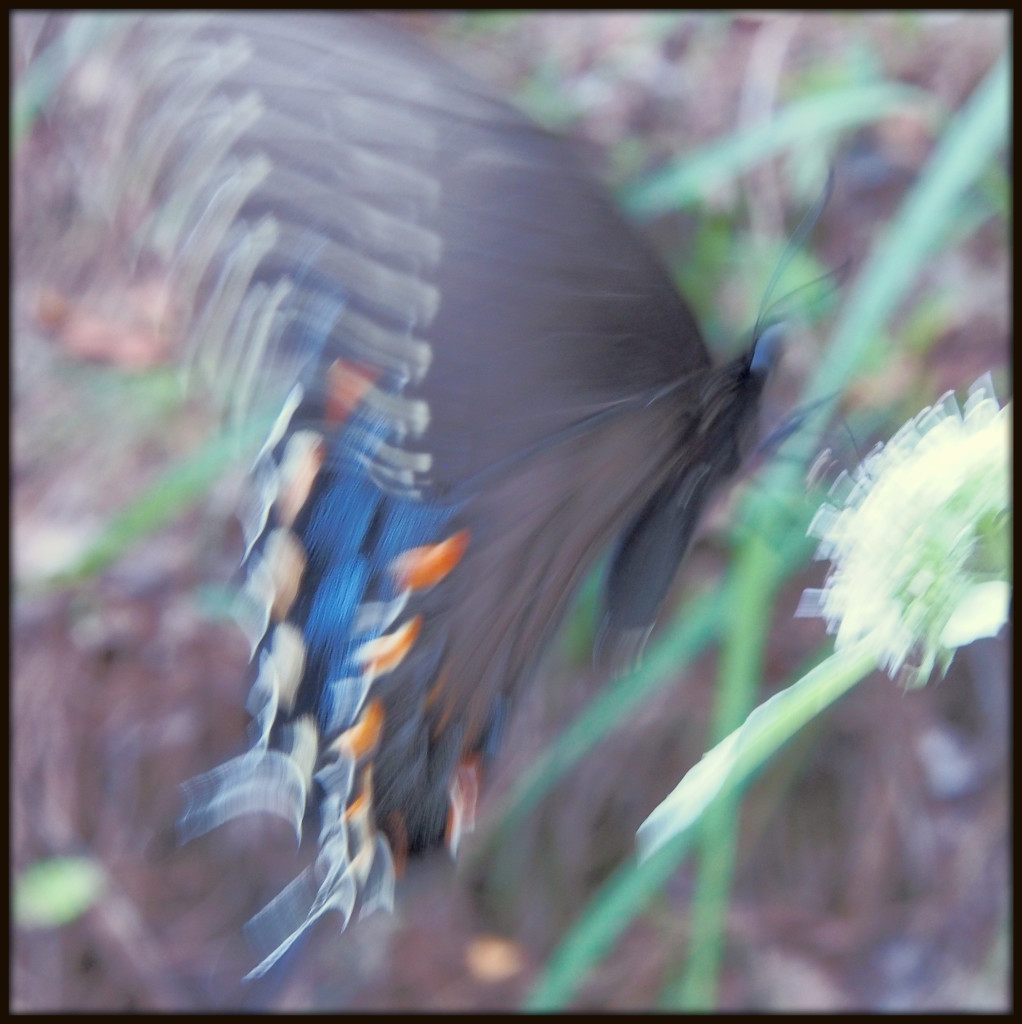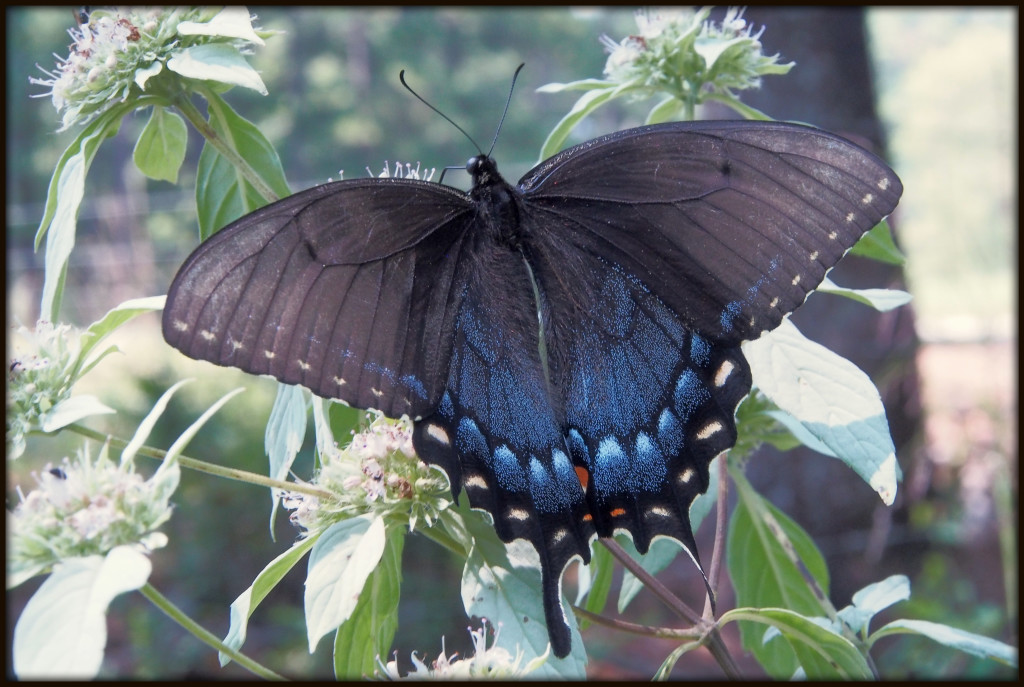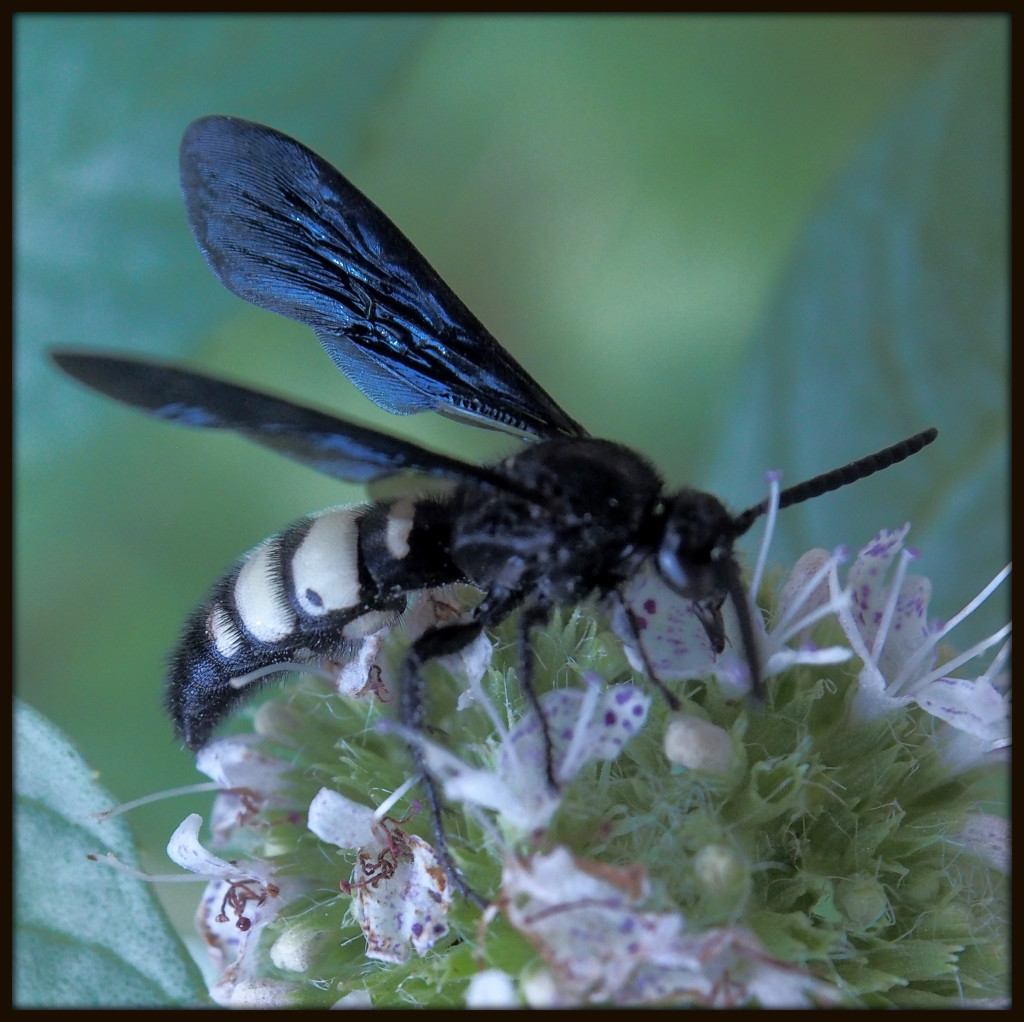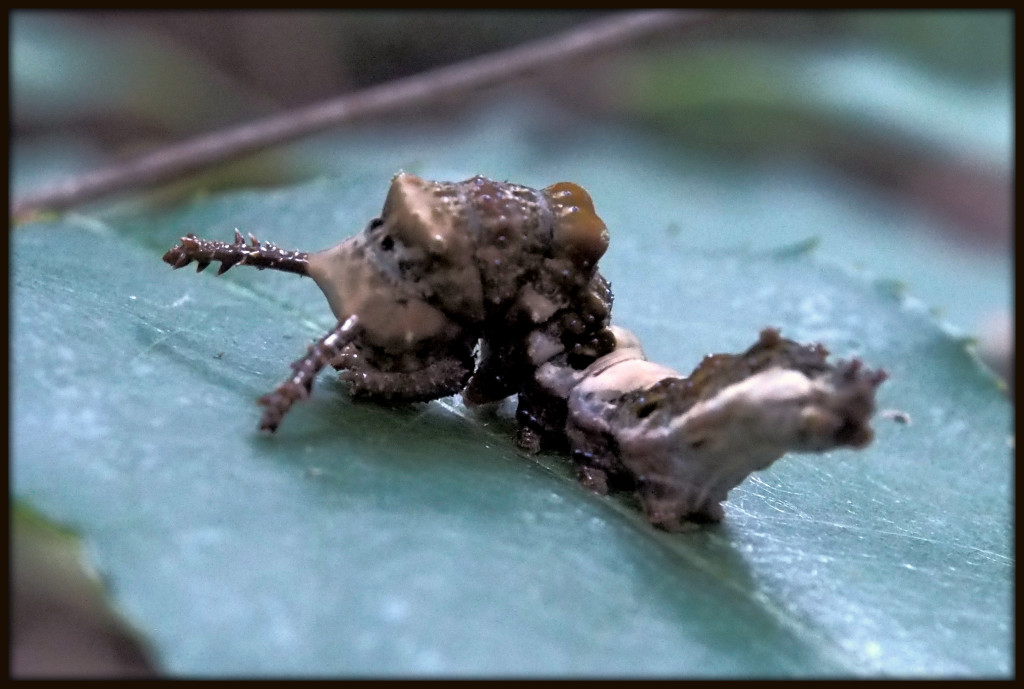I set out on my Piney Woods Church Road walk at nearly midday, and the heat of the day was starting to build. Most photographers shun the hours around noontime, particularly due to the harsh direct sunlight that is less than ideal for landscapes and macrophotography alike. It is, though, a great time for pollinators, still hard at work on the lingering Hoary Mountainmint blossoms. Today I was delighted to note the return of an immense (well, bigger than any insects I have photographed lately) wasp, over an inch in length, with orange-red legs and long, curling antennae. I had noticed one on the same flowers the previous day, but it darted away before I could even focus the lens. This time, though it skirted quickly from flower to flower, I was able to take several successful images, my favorite three of which are below. It turns out that the wasp is a Katydid Wasp, Sphex nudus, which, as the name suggests, preys on katydids. In the lowermost image, it is joined on the same flowerhead by a Double-Banded Scoliid Wasp, Scolia bicincta.
